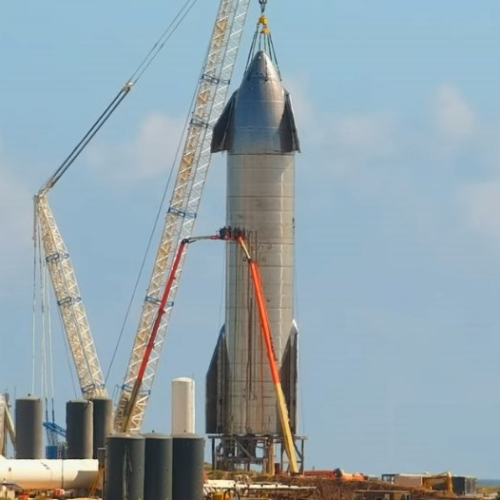Update on continuing engine testing of Starship prototype #8
Link here. The article provides details on the on-going engine tests of SpaceX’s eighth prototype of its Starship reusuable upper stage.
As should be expected, the testing has not gone exactly as planned, though clear progress is being made, especially in the testing of the header tanks in the nosecone..
After several days of test windows come and gone and an aborted attempt on November 9th, Starship SN8 finally ignited one of its three Raptor engines, feeding the engine with liquid methane and oxygen stored in two separate header tanks. Oddly, a second or two after startup and ignition, Raptor’s usual exhaust plume was joined by a burst of shiny firework-like debris. A relatively normal five seconds later, the Raptor cut off, though the engine appeared to remain partially on fire for another ten or so seconds – also somewhat unusual.
It appears that fire was from nearby debris, not the engine itself.
Another engine test is likely later this week. The actual 50,000 foot hop will not happen until they have completed all these engine tests.
Link here. The article provides details on the on-going engine tests of SpaceX’s eighth prototype of its Starship reusuable upper stage.
As should be expected, the testing has not gone exactly as planned, though clear progress is being made, especially in the testing of the header tanks in the nosecone..
After several days of test windows come and gone and an aborted attempt on November 9th, Starship SN8 finally ignited one of its three Raptor engines, feeding the engine with liquid methane and oxygen stored in two separate header tanks. Oddly, a second or two after startup and ignition, Raptor’s usual exhaust plume was joined by a burst of shiny firework-like debris. A relatively normal five seconds later, the Raptor cut off, though the engine appeared to remain partially on fire for another ten or so seconds – also somewhat unusual.
It appears that fire was from nearby debris, not the engine itself.
Another engine test is likely later this week. The actual 50,000 foot hop will not happen until they have completed all these engine tests.

